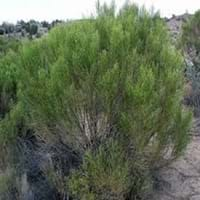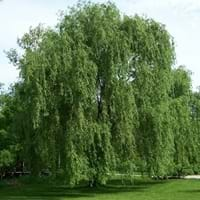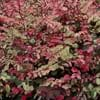Life Span
Perennial
Perennial
Origin
Hybrid origin, Southwestern United States
Eastern Asia, China
Types
Not Available
Babylon
Number of Varieties
Not Available
Habitat
riparian zones, Semi desert, Upland
Lake margins, River side, Swamps, Waste areas
USDA Hardiness Zone
8-10
5-9
Sunset Zone
7, 8, 9, 10, 11, 12, 13, 14
3a, 3b, 4, 5, 6, 7, 8, 9, 10, 14, 15, 16, 17, 18, 19, 20, 21, 22, 23, 24
Flower Color
White
Yellow green
Flower Color Modifier
Not Available
Bicolor
Fruit Color
creamy white
Not Available
Leaf Color in Spring
Green
Green, Light Green
Leaf Color in Summer
Green
Green, Light Green
Leaf Color in Fall
Green
Light Yellow, Yellow green
Leaf Color in Winter
Green
Not Available
Leaf Shape
Oblanceolate , Ovate
Needle like
Plant Season
Spring, Summer, Fall, Winter
Spring, Summer, Fall, Winter
Sunlight
Full Sun
Full Sun, Partial Sun
Type of Soil
Clay, Loam, Sand
Clay, Loam, Sand
The pH of Soil
Acidic, Neutral, Alkaline
Neutral
Soil Drainage
Well drained
Average
Bloom Time
Spring
Early Spring, Spring
Tolerances
Drought, Dry soil, Heat Tolerance
Drought, Soil Compaction, Wet Site
Where to Plant?
Ground, Pot
Ground
How to Plant?
Seedlings
Divison, Rooted stem cutting, Stem Planting, Transplanting
Plant Maintenance
Medium
Medium
Watering Requirements
Needs very little water
Keep ground moist, Requires consistently moist soil, Requires regular watering, Requires watering in the growing season
In Summer
Lots of watering
Lots of watering
In Spring
Moderate
Moderate
In Winter
Average Water
Average Water
Soil pH
Acidic, Neutral, Alkaline
Neutral
Soil Type
Clay, Loam, Sand
Clay, Loam, Sand
Soil Drainage Capacity
Well drained
Average
Sun Exposure
Full Sun
Full Sun, Partial Sun
Pruning
Cut back old stems to the ground, Remove damaged leaves, Remove dead branches, Remove dead leaves
Prune if you want to improve plant shape, Remove damaged leaves, Remove dead leaves
Fertilizers
can go long without fertilizers
Compost, fertilize every 2-3 weeks while growing, fertilize in growing season
Pests and Diseases
Pests and diseases free
Aphids, Beetles, Caterpillars, Red blotch
Plant Tolerance
Dry Conditions, Dry soil, Heat And Humidity
Drought, Wet Site
Flowers
Showy
Insignificant
Flower Petal Number
Single
Not Available
Foliage Texture
Fine
Medium
Foliage Sheen
Glossy
Matte
Attracts
Butterflies
Not Available
Aesthetic Uses
along a porch, deck or patio, Beautification, Ground Cover, Showy Purposes, Wild gardens
Beautification, Landscape Designing, Showy Purposes
Beauty Benefits
Not Available
No Beauty Benefits
Edible Uses
Sometimes
Yes
Environmental Uses
Air purification
Air purification, Erosion control, Food for birds, Food for insects, Nesting sites for birds, Prevent Soil Erosion, Shadow Tree, Shelter for wildlife, Versatility
Medicinal Uses
anti-inflammatory, Anti-oxidant, cholesterol-lowering
Headache, Sedative, Stomach pain
Part of Plant Used
Twigs
Tree trunks
Other Uses
Can be made into a herbal tea
Showy Purposes, Used as firewood, Used as Ornamental plant
Used As Indoor Plant
No
No
Used As Outdoor Plant
Yes
Yes
Garden Design
Groundcover
Cutflower, Dried Flower/Everlasting, Feature Plant, Shade Trees
Botanical Name
BACCHARIS 'Centennial'
SALIX babylonica f. tortuosa
Common Name
desert broom , broom baccharis , greasewood
Corkscrew Willow
In Hindi
desert broom
पेंचकश विलो
In German
Wüste Besen
Korkenzieher-Weide
In French
desert broom
Tire-bouchon Willow
In Spanish
escoba del desierto
Tire-bouchon Willow
In Greek
desert broom
τιρμπουσόν Willow
In Portuguese
vassoura do deserto
corkscrew salgueiro
In Polish
desert broom
korkociąg Willow
In Latin
desert broom
corkscrew Willow
Phylum
Magnoliophyta
Magnoliophyta
Class
Magnoliopsida
Magnoliopsida
Order
Asterales
Malpighiales
Family
Asteraceae
Salicaceae
Clade
Angiosperms, Asterids, Eudicots
Angiosperms, Eudicots, Rosids
Subfamily
Not Available
Salicoideae
Number of Species
Not Available
Not Available
Importance of Desert Broom and Corkscrew Willow
Want to have the most appropriate plant for your garden? You might want to know the importance of Desert Broom and Corkscrew Willow. Basically, these two plants vary in many aspects. Compare Desert Broom and Corkscrew Willow as they differ in many characteristics such as their life, care, benefits, facts, etc. Every gardener must at least have the slightest clue about the plants he wants to plant in his garden. Compare their benefits, which differ in many ways like facts and uses. The medicinal use of Desert Broom is anti-inflammatory, Anti-oxidant and cholesterol-lowering whereas of Corkscrew Willow is Headache, Sedative and Stomach pain. Desert Broom has beauty benefits as follows: Not Available while Corkscrew Willow has beauty benefits as follows: Not Available.
Compare Facts of Desert Broom vs Corkscrew Willow
How to choose the best garden plant for your garden depending upon its facts? Here garden plant comparison will help you to solve this query. Compare the facts of Desert Broom vs Corkscrew Willow and know which one to choose. As garden plants have benefits and other uses, allergy is also a major drawback of plants for some people. Allergic reactions of Desert Broom are Unknown whereas of Corkscrew Willow have Asthma respectively. Having a fruit bearing plant in your garden can be a plus point of your garden. Desert Broom has no showy fruits and Corkscrew Willow has no showy fruits. Also Desert Broom is not flowering and Corkscrew Willow is not flowering . You can compare Desert Broom and Corkscrew Willow facts and facts of other plants too.





